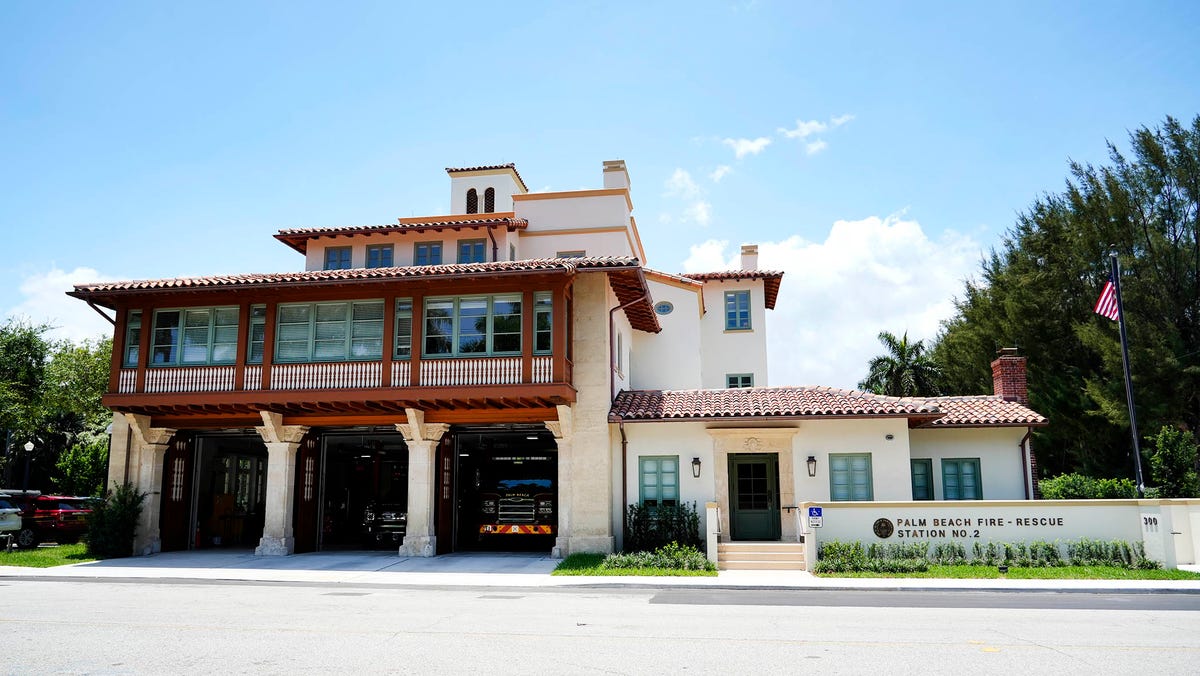Palm Beach Fire-Rescue is preparing for the coming season with new facilities, new technology, new vehicles and new awards under its belt.
Fire-Rescue crews moved into the North Fire Station in March, following a $17 million renovation of the historic building. This will be the first full season with all of the new features up and running at the station, said Palm Beach Fire-Rescue spokesperson Assistant Fire Chief Joseph Sekula.
“It’s been a huge undertaking,” he said of the move-in process. “We have a lot of new technology in the station, and it’s pretty prepared itself well now for season.”
In the off-season, Palm Beach Fire-Rescue works through any bugs in the new technology and systems at the North Fire Station at 300 N. County Road, Sekula said.
“Everything, I’m proud to say, is working as intended and will definitely be a huge benefit to the community,” he said.
A lot of the new technology in the North Fire Station is “in the walls” and not visible to the naked eye, Sekula said.
A new alert system notifies crews of a call through overhead speakers while also using lights and digital message boards to provide more information about the type of emergency and address, he said. New countdown timers also help crews measure their response times down to the second.
“The quicker we can get to someone who’s having an emergency, the better,” Sekula said.
For drivers, the town continues to expand its HAAS Alert system, which notifies compatible vehicle infotainment systems and navigation apps that an emergency vehicle is approaching. The technology is in all of the town’s Fire-Rescue units this season, Sekula said.
Every unit has a digital transmitter that sends digital alerts to all drivers on the road, either through their in-car navigation systems or traffic apps, as soon as a Fire-Rescue truck or engine turns on its lights and sirens, he said.
“Way before we get to where they are, it’s going to send notifications ahead of us where we’re going,” Sekula said.
Officials hope the system will help Fire-Rescue crews navigate the island’s traffic congestion, he added.
The department will also this season have the ability to use two small quick-response vehicles — one at the North Fire Station and the other at the station in Midtown — to navigate areas where traffic is clogged and larger trucks cannot get through, Sekula said. The quick-response vehicles have a smaller footprint to go down side streets or into smaller spaces, and each one can transport a small crew and a patient, he said.
“Between the congestion of having all of these people on our roads, and the construction that we normally have going on, and the undergrounding construction, and then with any shutdowns of any roads, it makes it hard for our units to navigate through sometimes,” he said.
During the off-season, Palm Beach Fire-Rescue personnel trained to maintain certifications, Sekula said. That included confined-spaces and trench-rescue trainings, he said.
The Firefighter of the Month for July was Lt. Cesar Lora, and the award for August went to Lt. Robert Miraglia, Sekula said.
Palm Beach Fire-Rescue also received two awards over the summer, including one in August from the American Heart Association, which was presented to the department for its ability to respond to and identify calls quickly where someone is having a stroke or heart attack, Sekula said.
In July, the department received the Gold Helmet Award from the National Firefighter Registry for Cancer, a recognition that is presented to departments that register 50% or more of personnel, he said. The registry works to track and better understand the diagnoses and causes of cancer in firefighters.
Palm Beach is one of 61 Gold Helmet departments in the U.S., one of eight in Florida and one of two in Palm Beach County, along with Greenacres Fire Rescue, according to the National Firefighter Registry for Cancer’s website.
Because there is such a high rate of cancer in fire-rescue crews, Palm Beach installed in an exhaust-capturing system named Plymovent in all three of its stations, Sekula said. Special high-heat hoses extend from the ceiling and connect to the exhaust of each vehicle in a bay, he said.
“It minimizes the amount of diesel exhaust that gets trapped in the bays,” he said.
The top call for service in Palm Beach continues to be falls, Sekula said. Palm Beach Fire-Rescue offers a fall prevention program where a crew member will go to either a home or business and review possible hazards and what to do if someone falls, he said.
For more information about Palm Beach’s fall prevention program, call 561-838-5420.
Kristina Webb is a reporter for Palm Beach Daily News, part of the USA TODAY Florida Network. You can reach her at kwebb@pbdailynews.com. Subscribe today to support our journalism.











